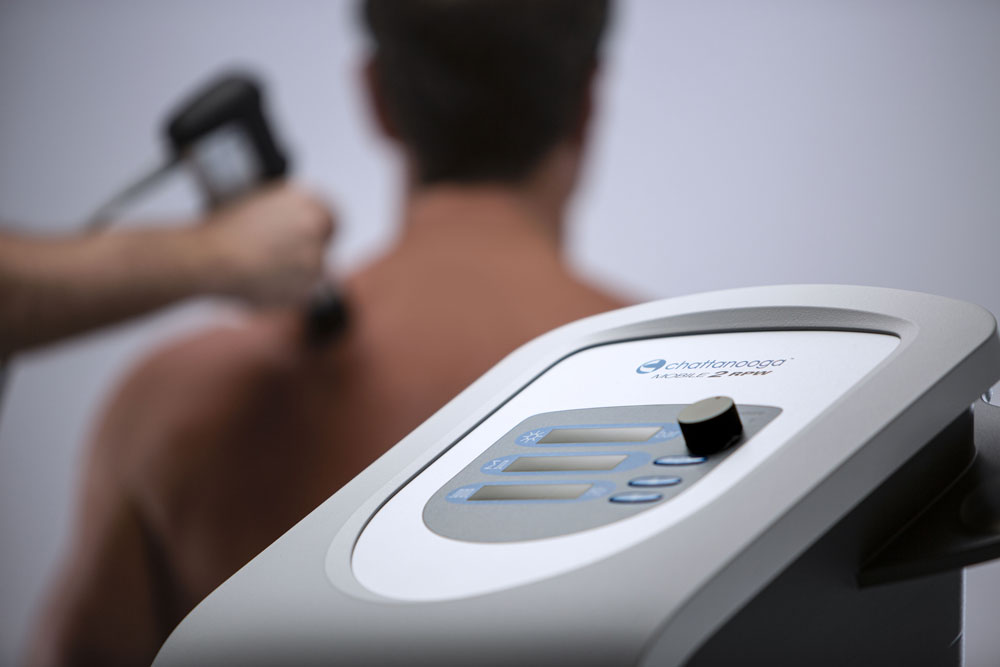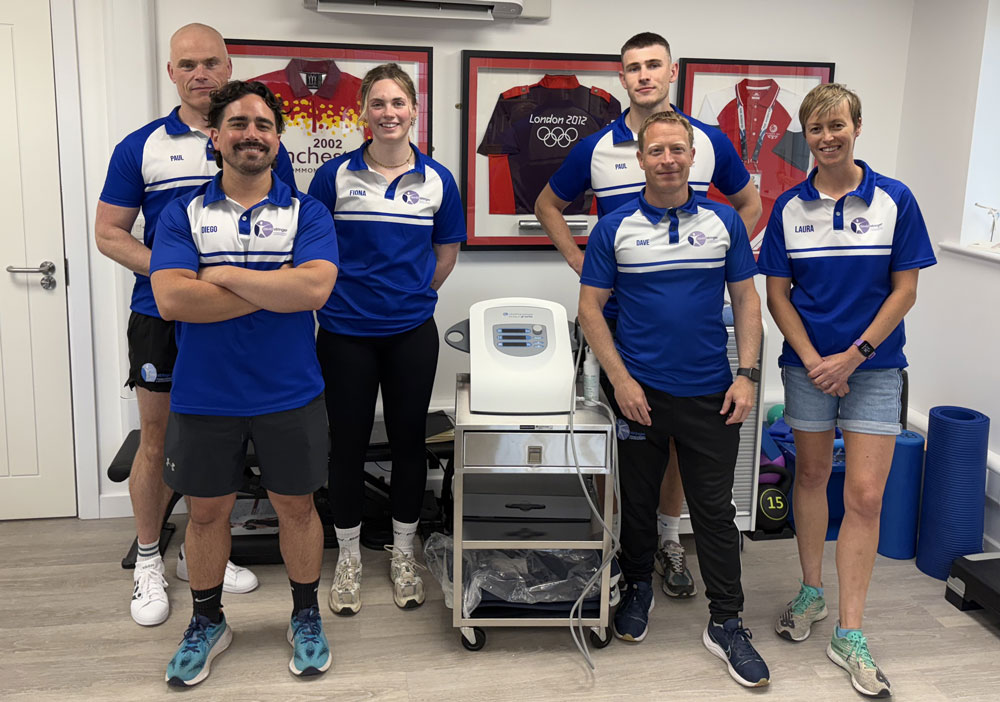What is Shockwave Therapy?
Shockwave therapy is available alongside standard physiotherapy treatment for a number of conditions, including:
- Achilles Tendinopathy
- Plantar Fasciitis
- Patella Tendinopathy
- Tennis Elbow
- Golfers Elbow
- Shoulder pain and calcific tendinosis of the rotator cuff
- Bone stress injuries and shin splints
It has been clinically proven to work and is part of the NICE (National Institute of Clinical Excellence) guidelines for the treatment of tendon pain.

How Does Shockwave Therapy Work?
Shockwave therapy works by creating a sound wave that is transmitted to the injured tissues. This process:
- Increases cell permeability
- Increases blood flow
- Releases nitrous oxide, increasing metabolic activity
- Flushes the area with new cells
- Regulates the body’s immune and inflammatory response.
Why Choose David Stringer Physiotherapy & Sports Injury for Your Shockwave Treatment?
The evidence is clear that shockwave therapy is best delivered alongside a course of physiotherapy. Unlike some providers, when you have a session of shockwave therapy with us, it will form part of your physiotherapy session. Most of the research on shockwave therapy is based around delivering the shockwave to only the injured area (e.g., the tendon). However, we have found that combining this with treating other tight areas known as trigger points along the kinetic chain can give even better results.
We have invested in a Chattanooga device, which means the machine can deliver up to 5 bar of pressure, making it effective at treating even deep tendinopathies such as in the hamstring. Our link with Enovis, their parent company, ensures that our physiotherapists take part in all of their in-house training as well.

Cost of Shockwave Therapy
We charge £80 for each shockwave session (this can vary if you are using health insurance as the price is sometimes set by them). You will typically need 3-6 sessions spaced 5-10 days apart.
Duration of Shockwave Therapy
The shockwave part of your session may only take around 5 minutes on the actual painful area. However, during your session at David Stringer Physiotherapy, we may also deliver shockwave therapy to trigger points (areas of tightness) in the corresponding muscle groups. Additionally, we may provide other physiotherapy treatment techniques during the session and review your exercise program.
Potential Side Effects
Shockwave therapy can often be a bit painful, particularly at the time of application. This sensation can often be altered by changing the frequency (speed) of the shockwaves delivered. Other possible side effects include local inflammation, bruising, paraesthesia, and erythema. Shockwave therapy is non-invasive and considered to be low risk.
Contraindications
There are some instances when shockwave therapy would be inappropriate and contraindicated. These include:
- Epiphysis
- Anterior Cervical
- DVT
- Electronic Implants (Pacemaker)
- Epilepsy
- Impaired Cognition
- Impaired Sensation
- Local Infection
- Malignancy
- Metal Implants
- Pregnancy
- Recent Radiotherapy
- Significantly impaired circulation
Book Your Appointment
Ready to experience the benefits of shockwave therapy? Click the button below to book your appointment with David Stringer Physiotherapy


